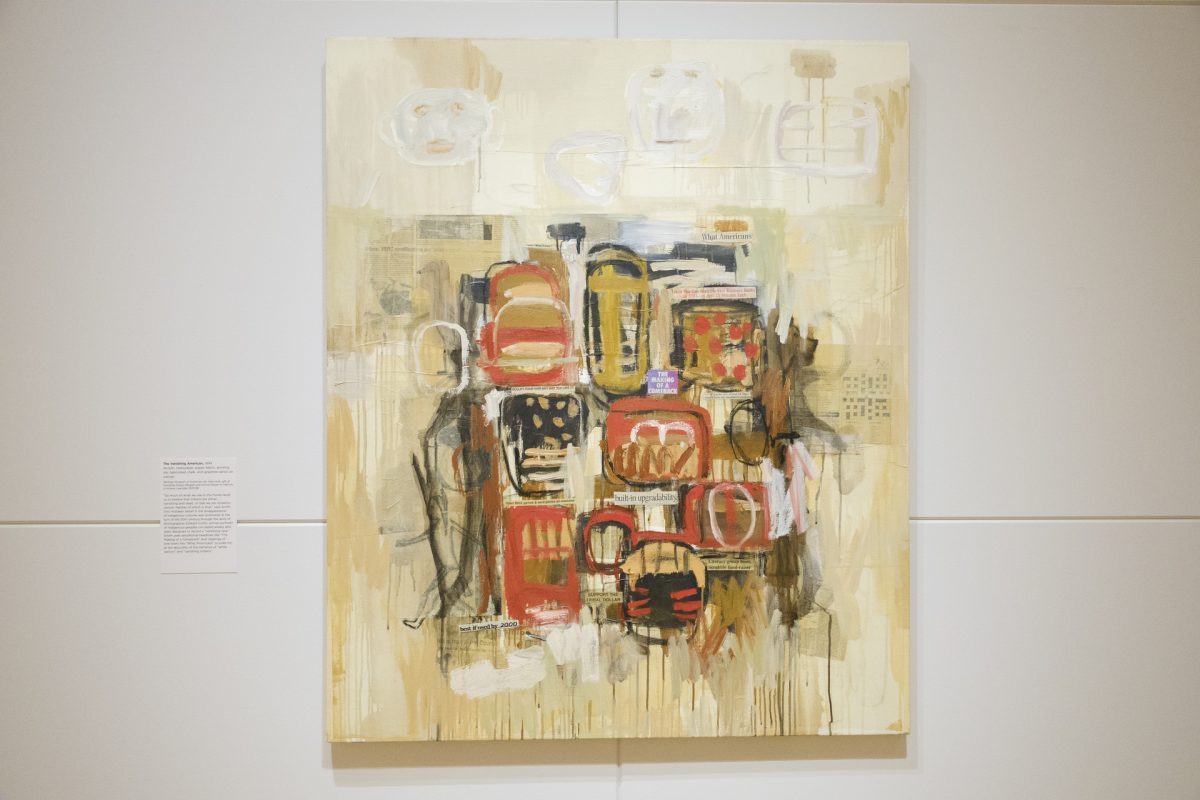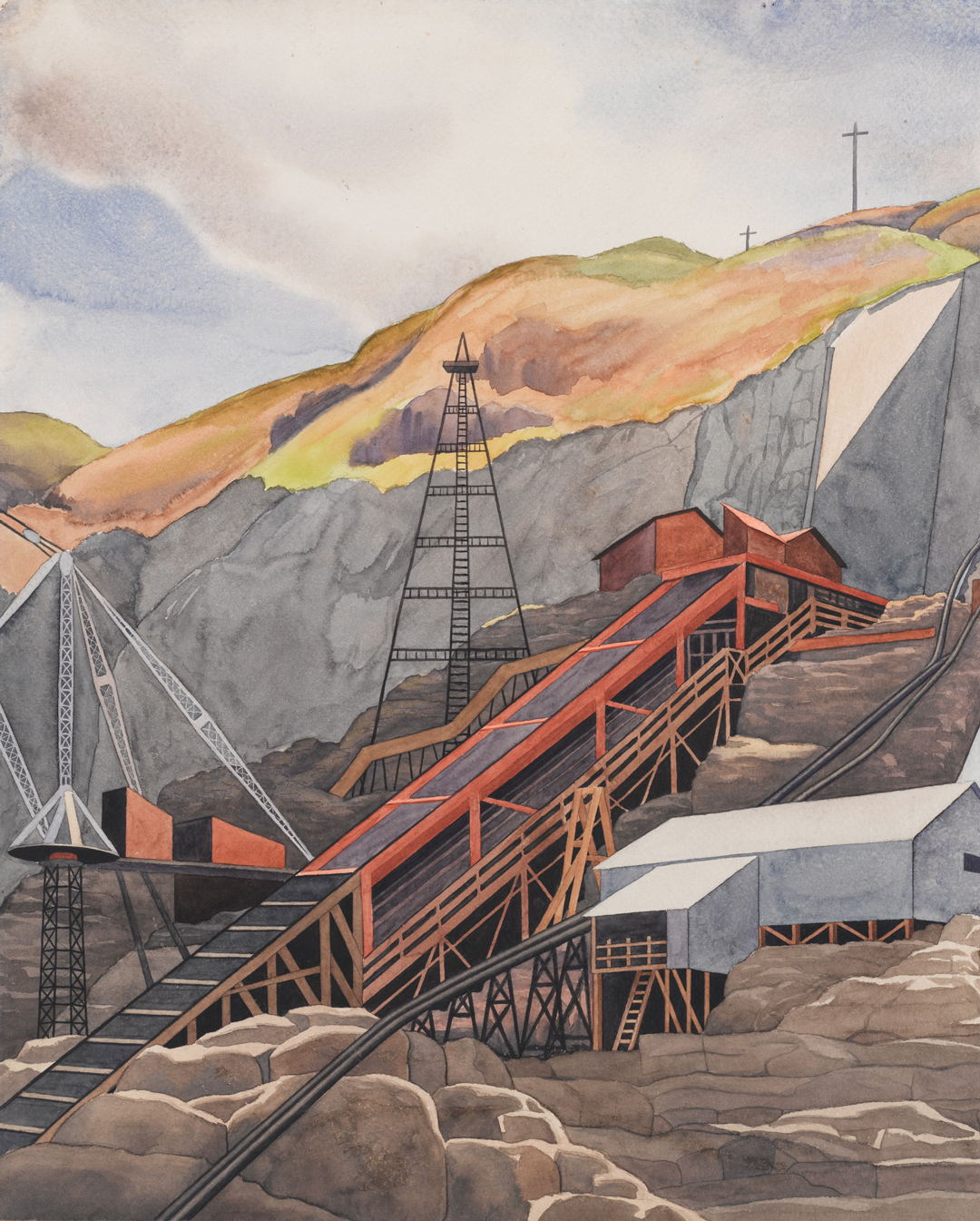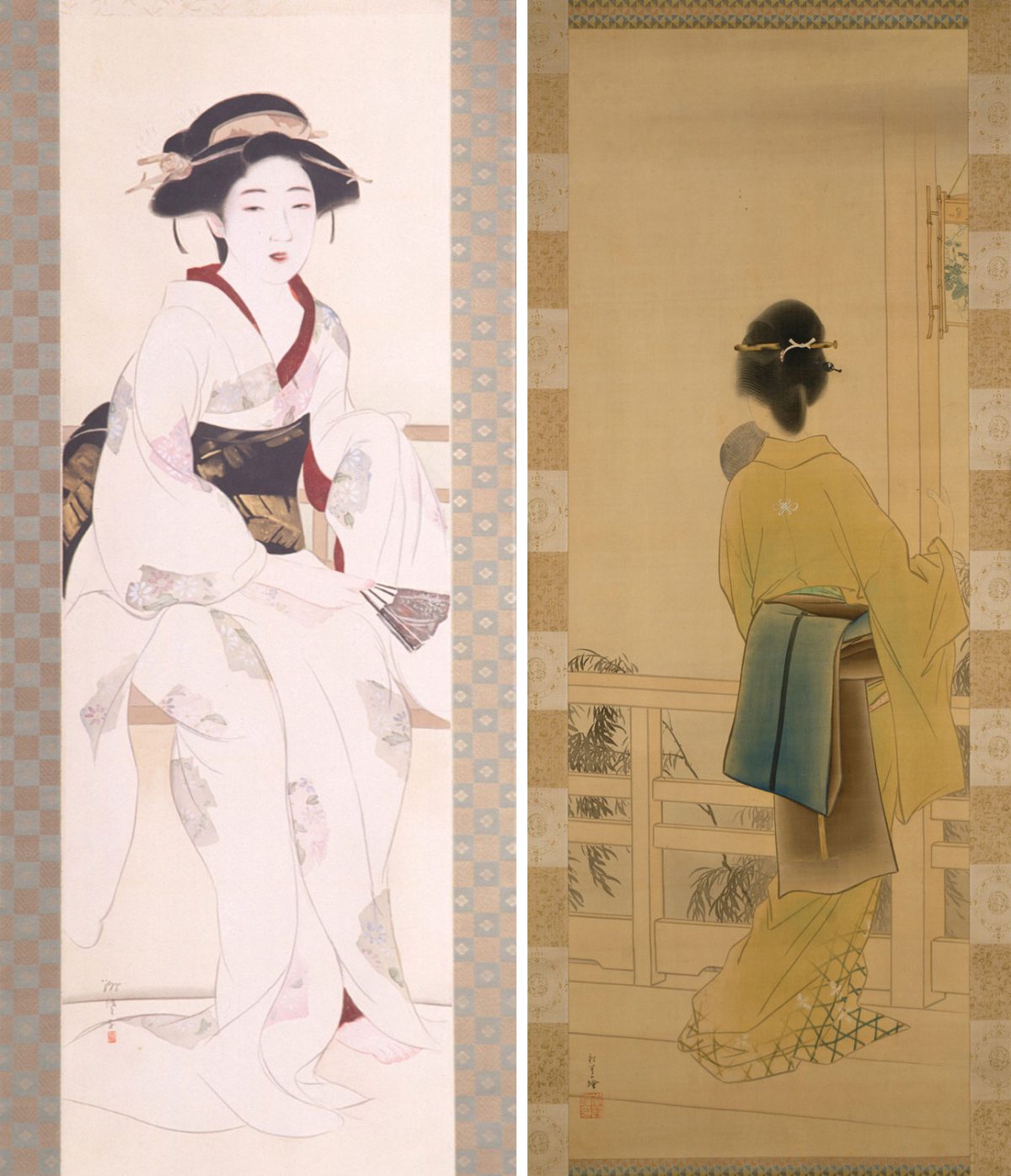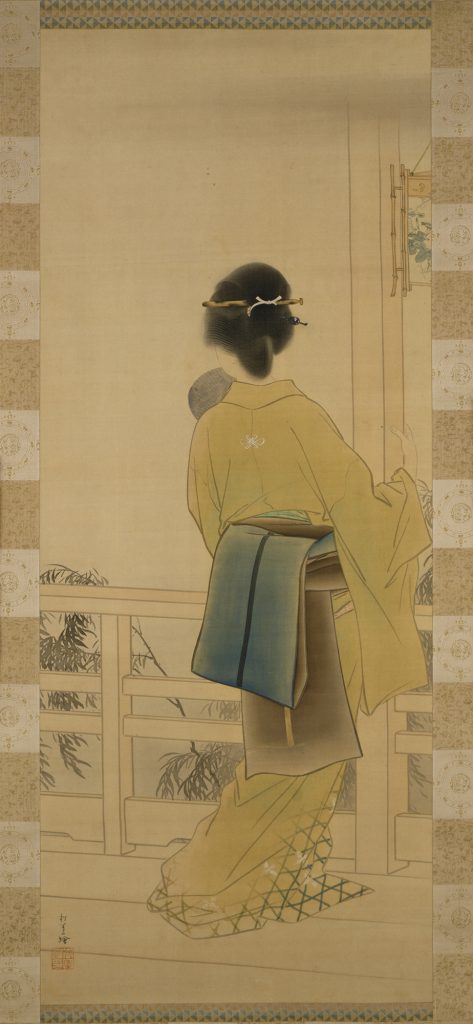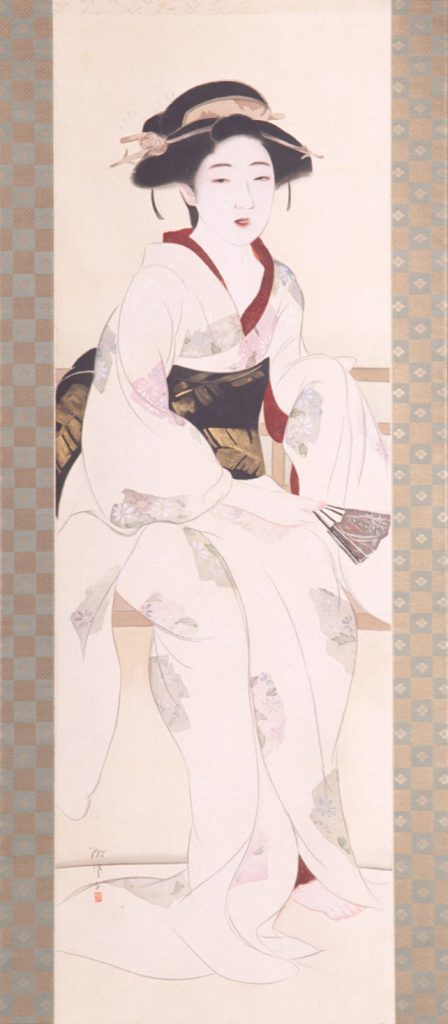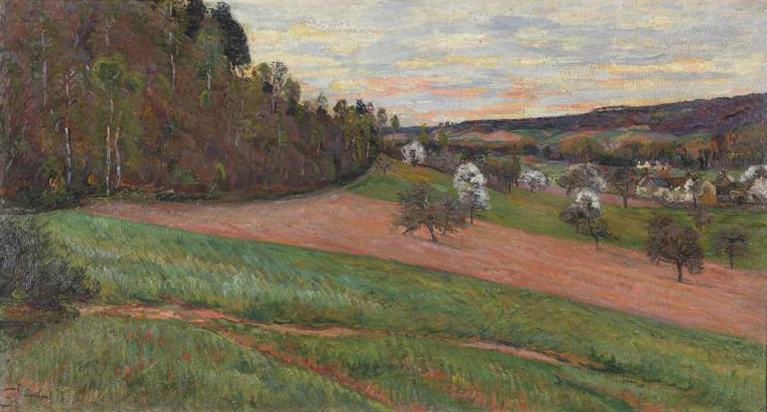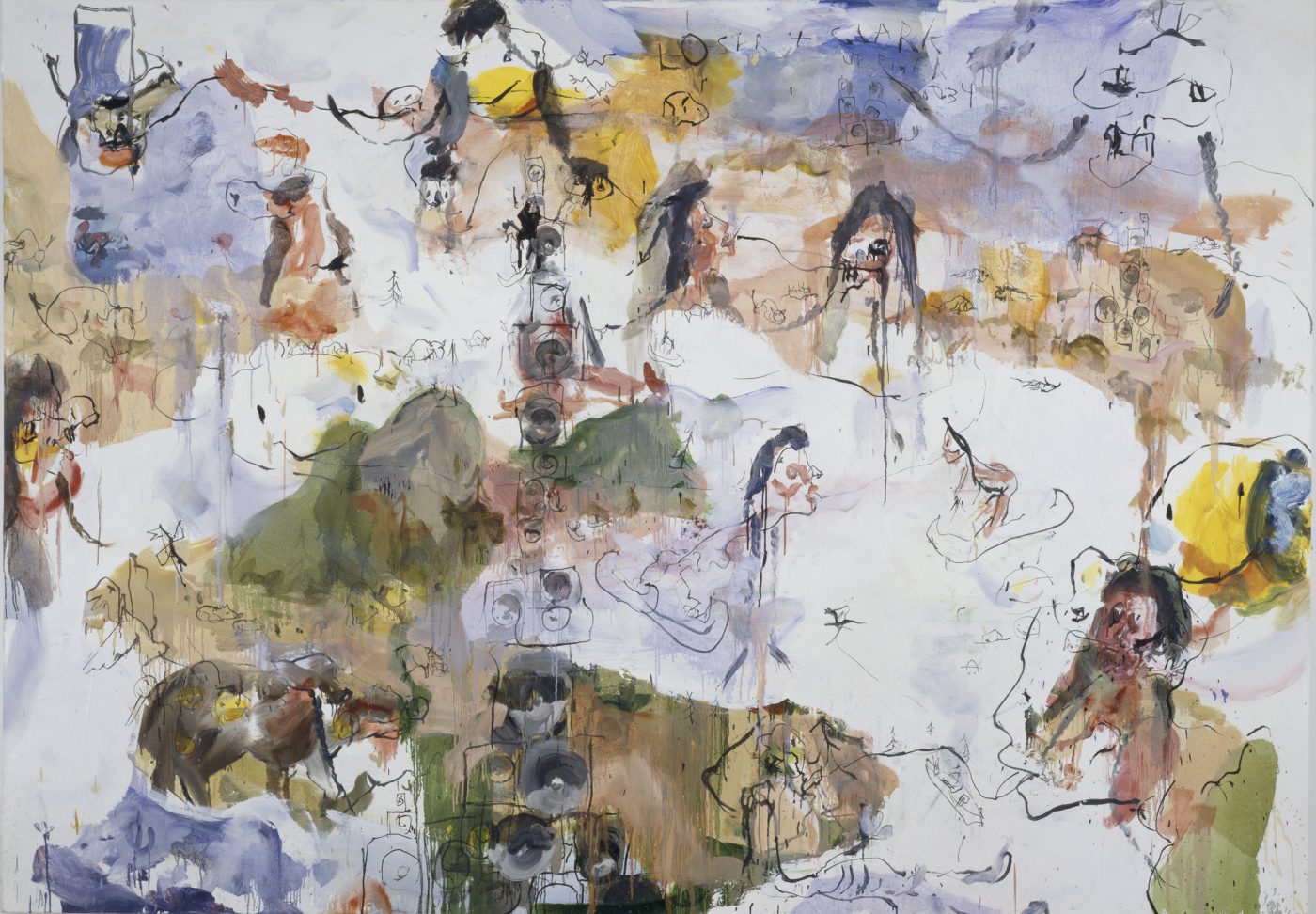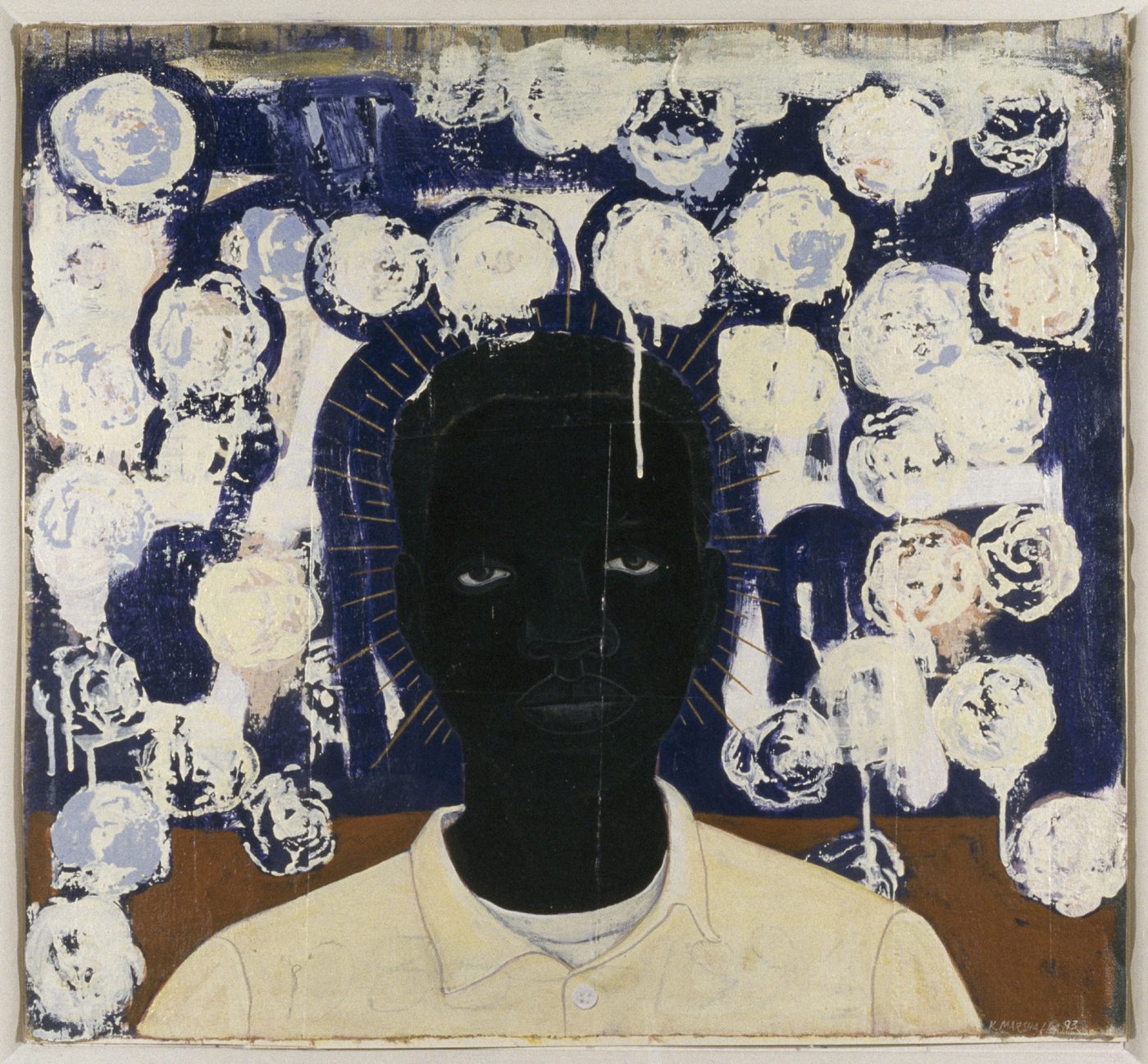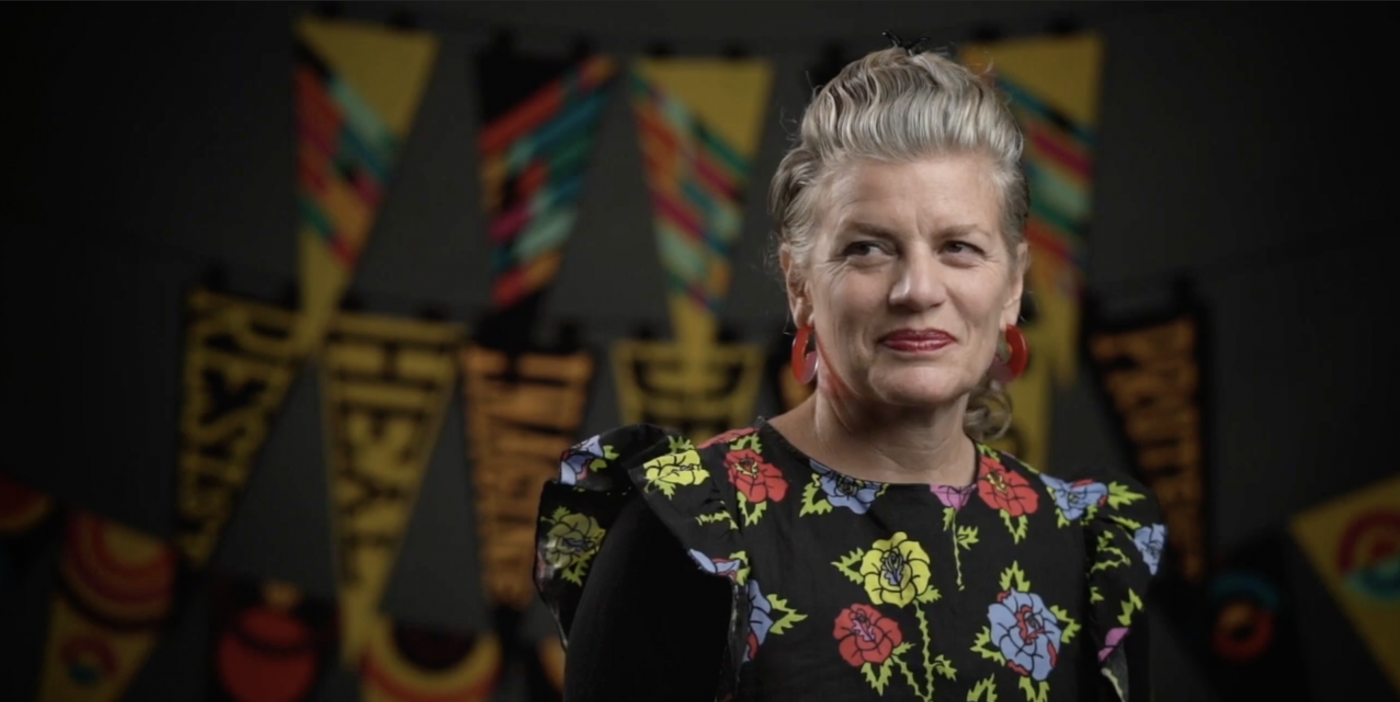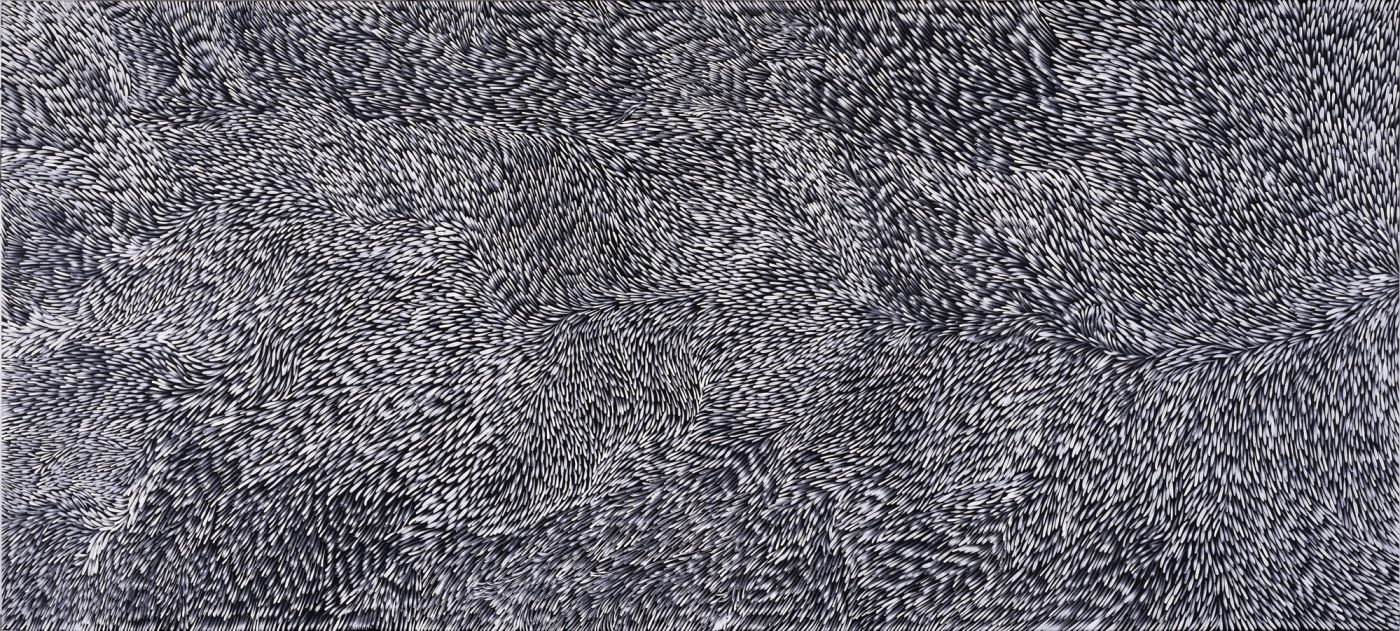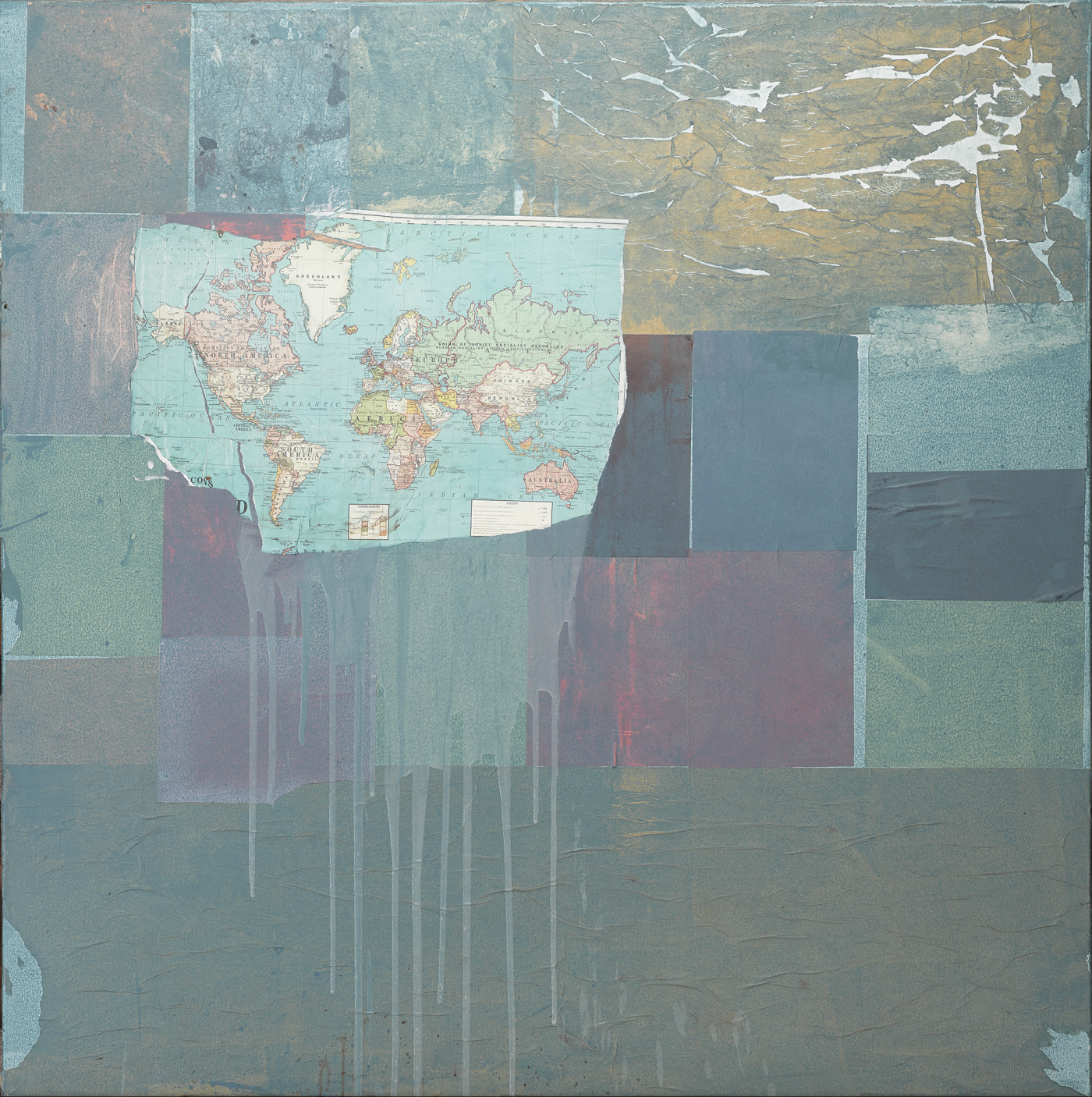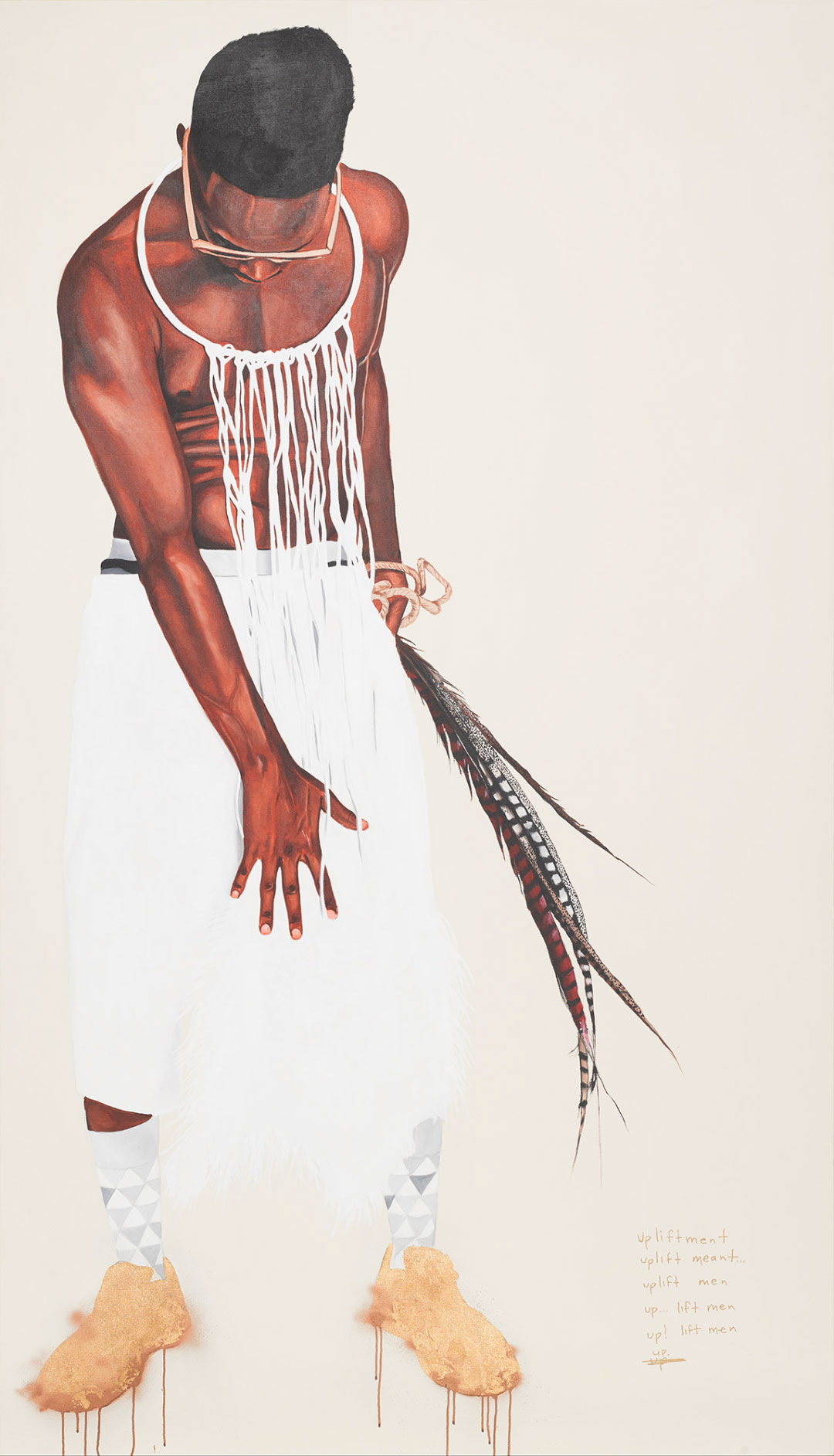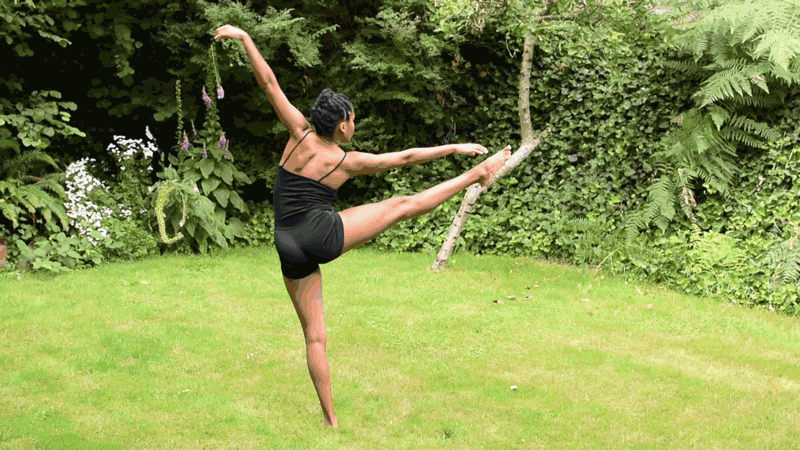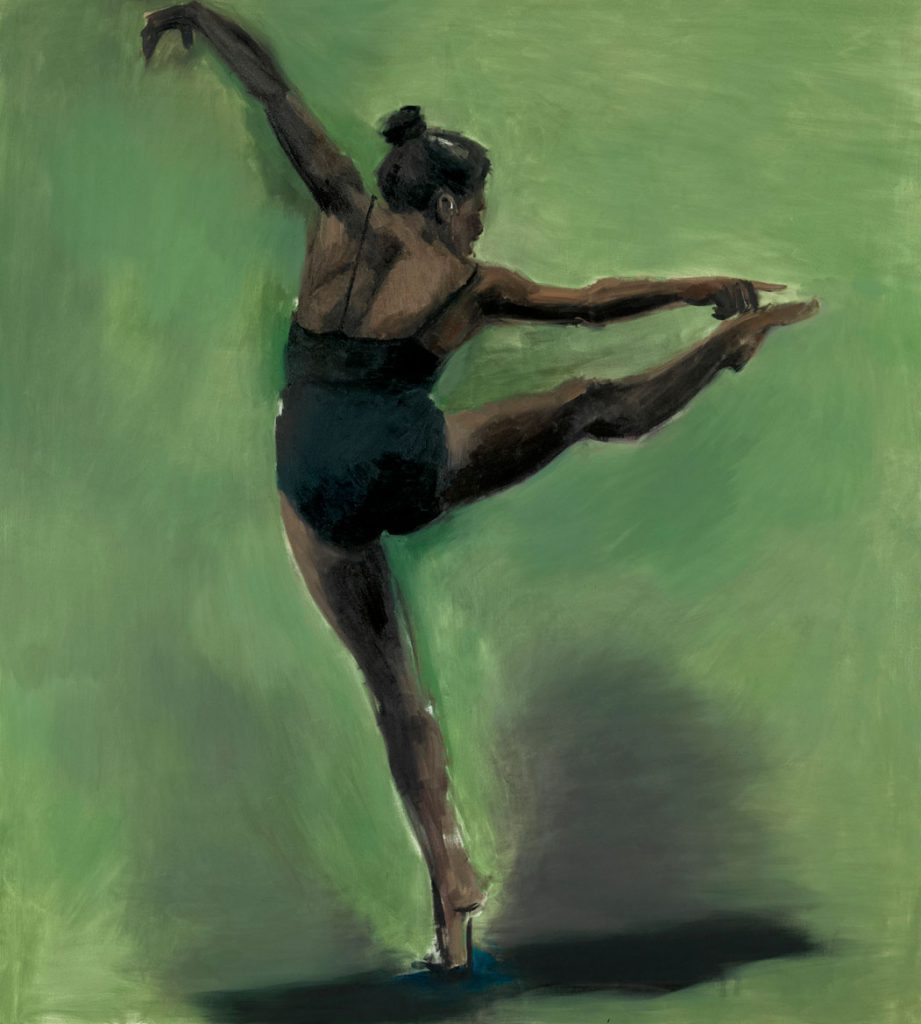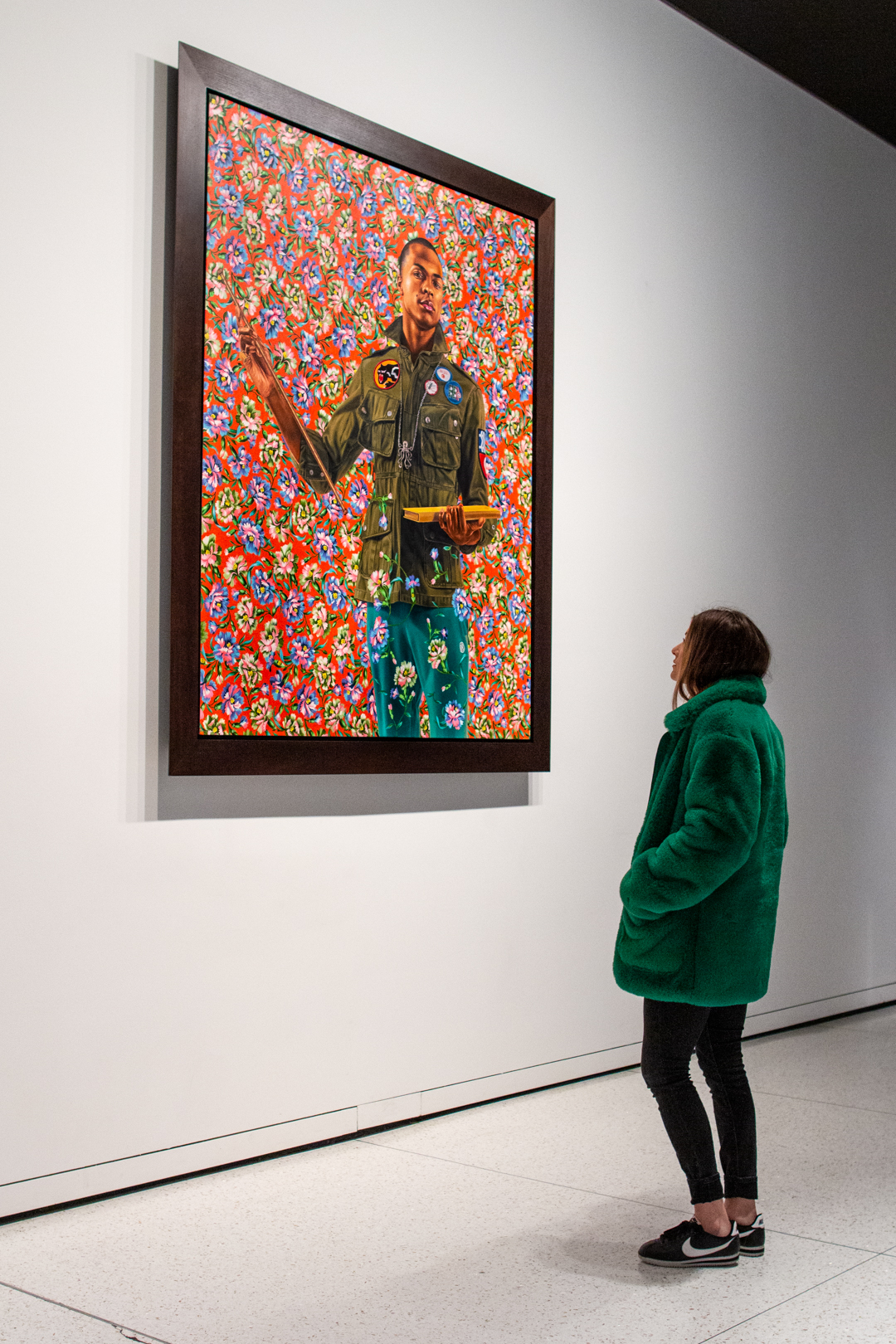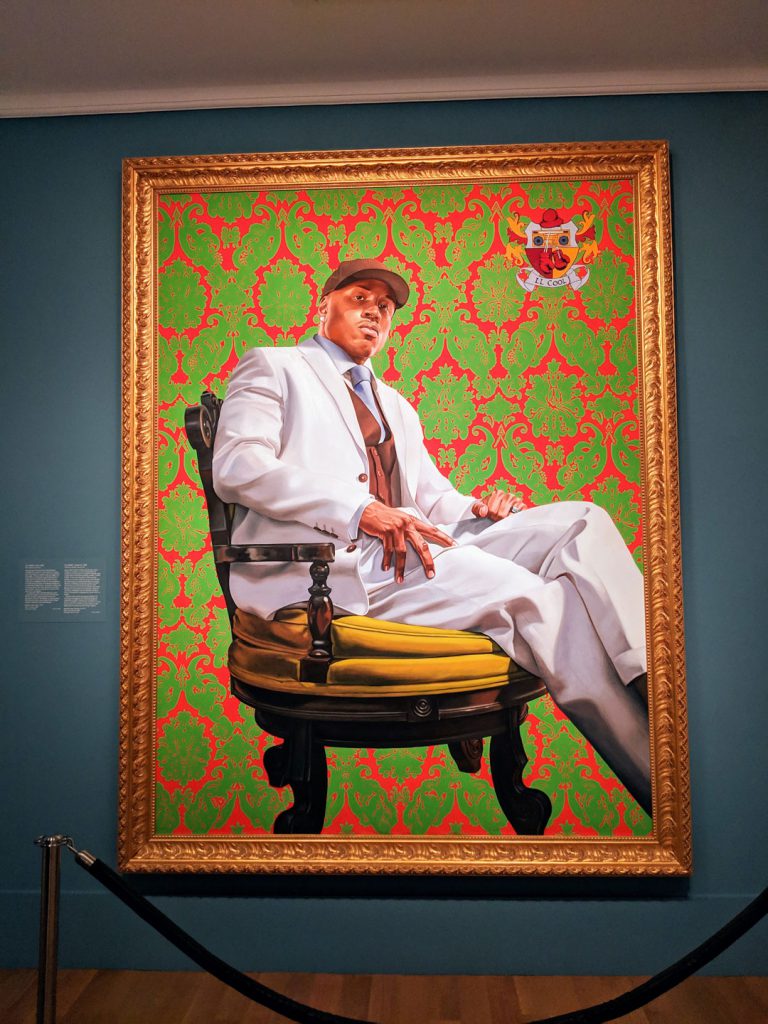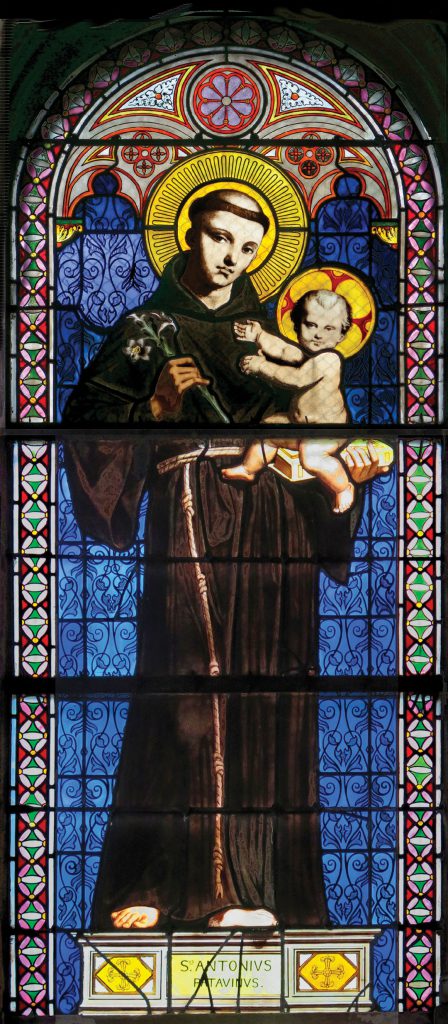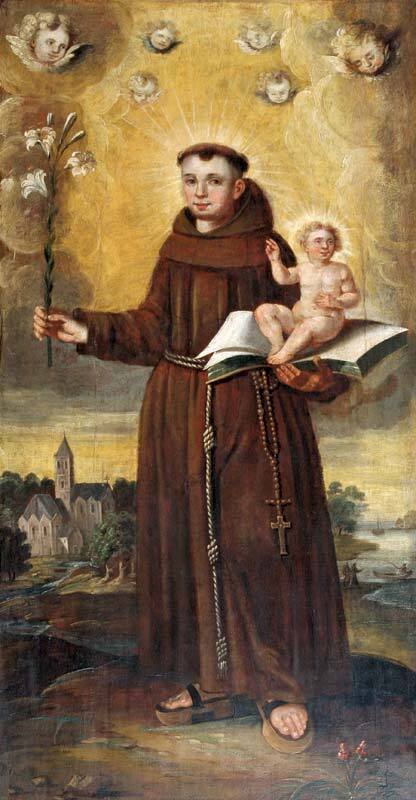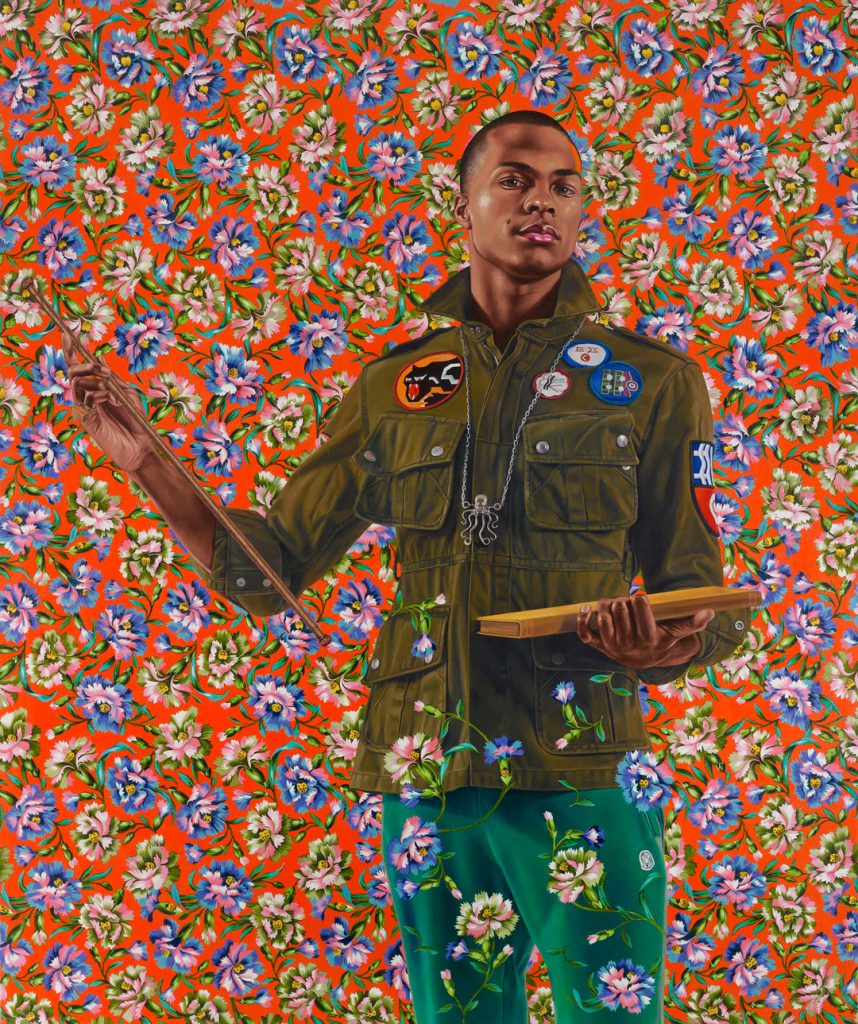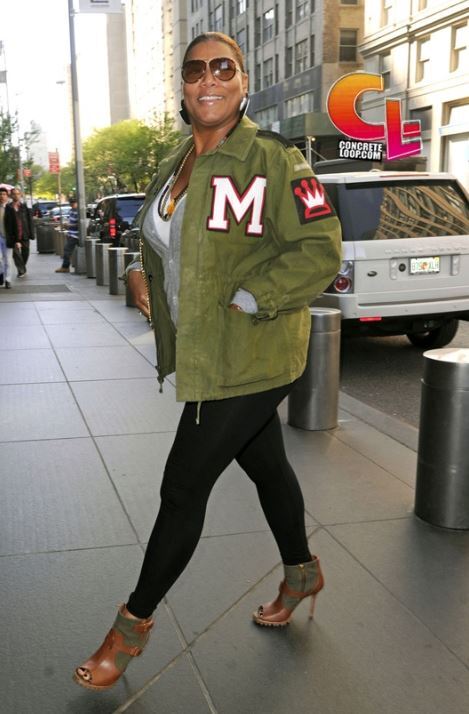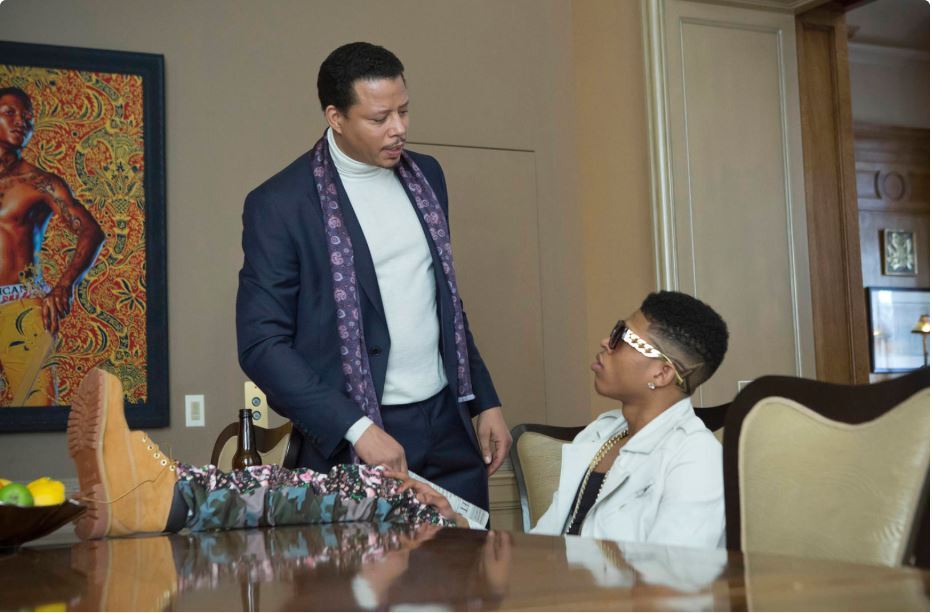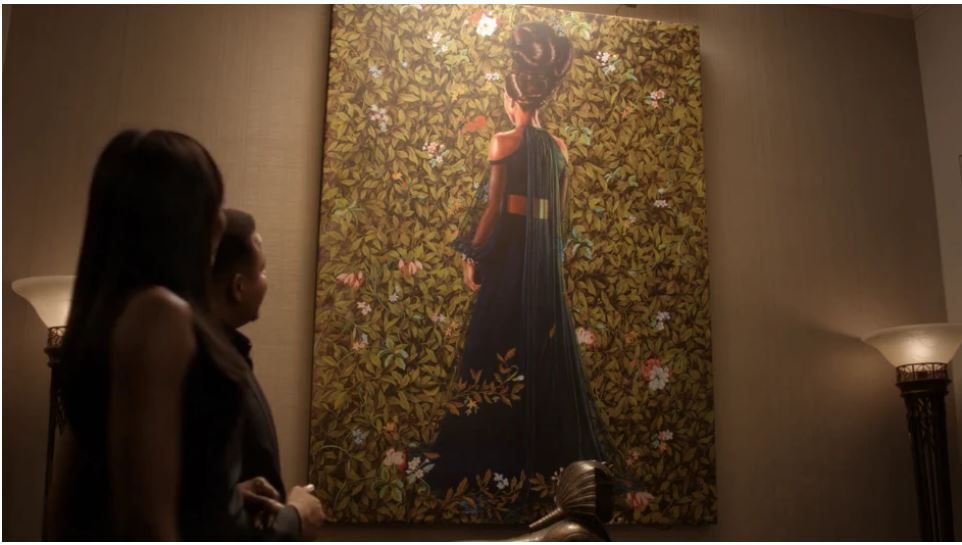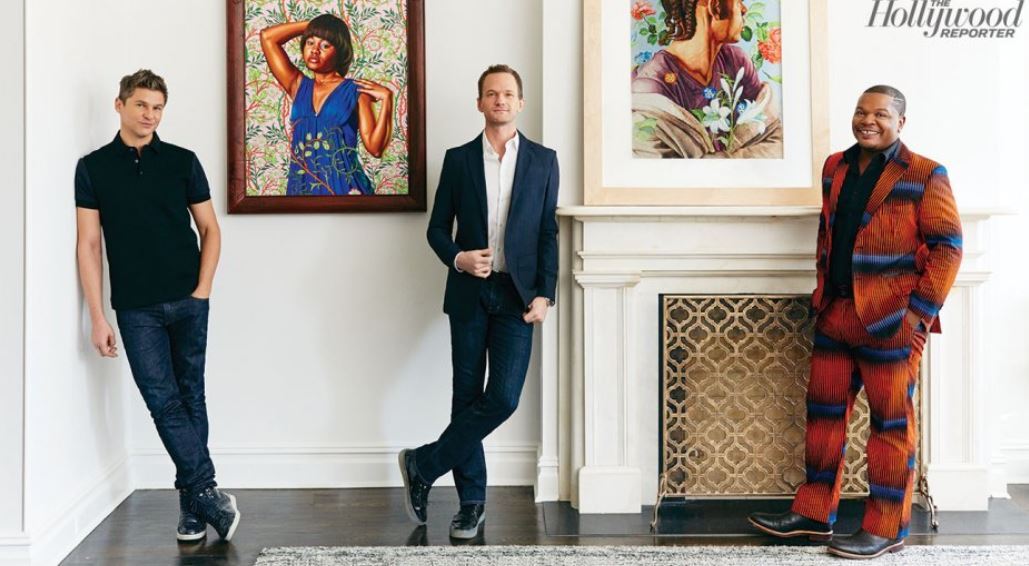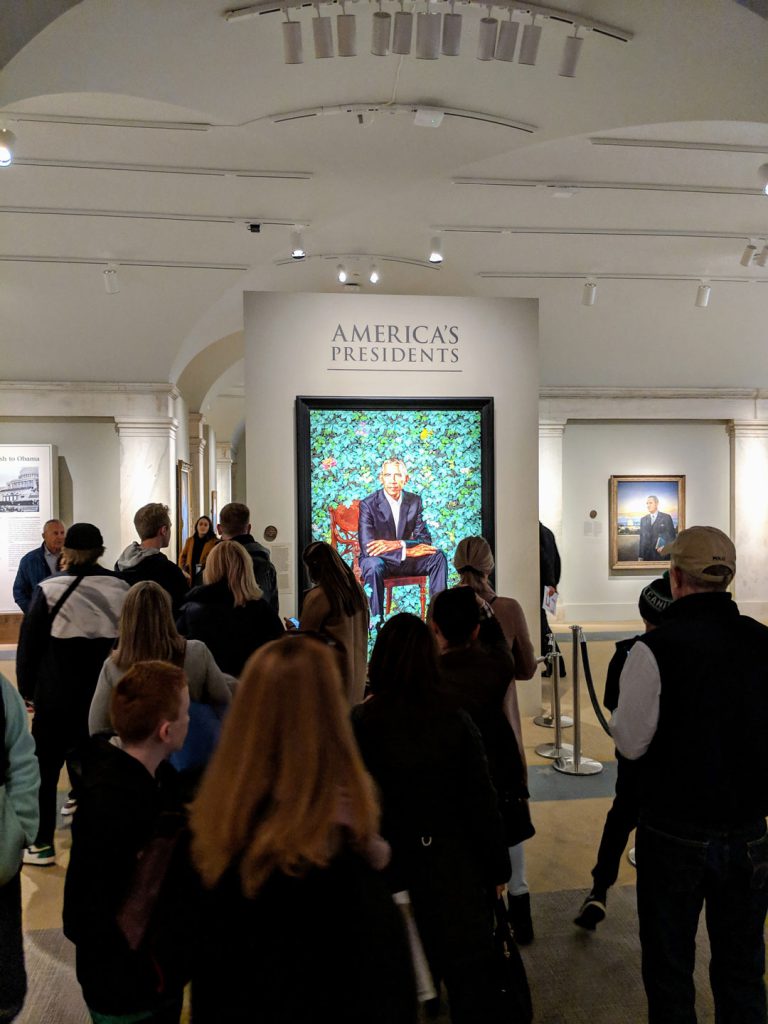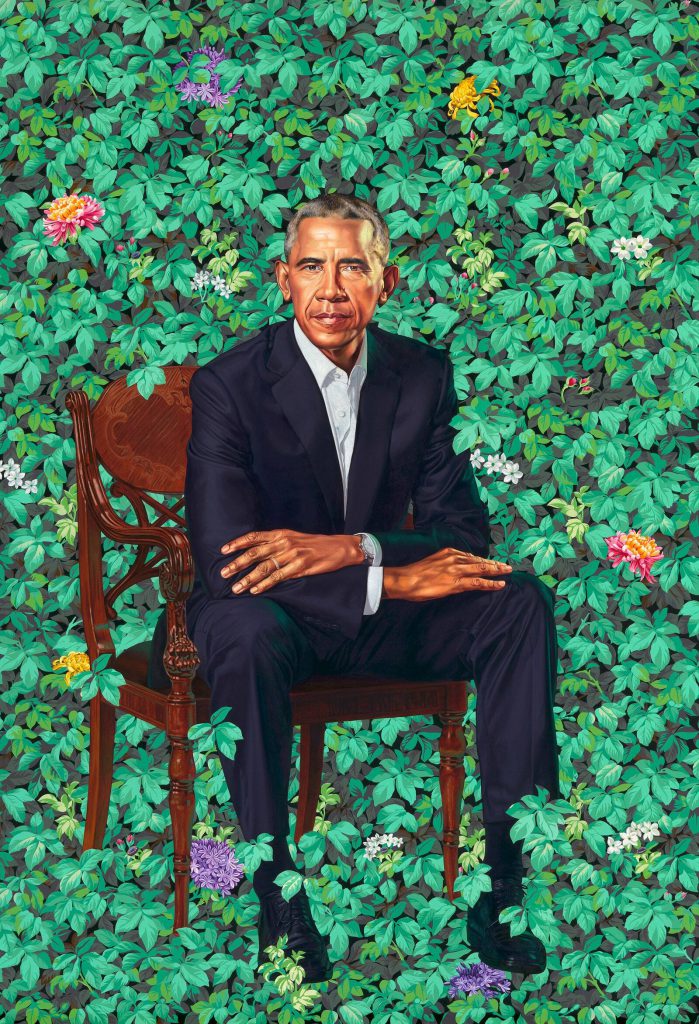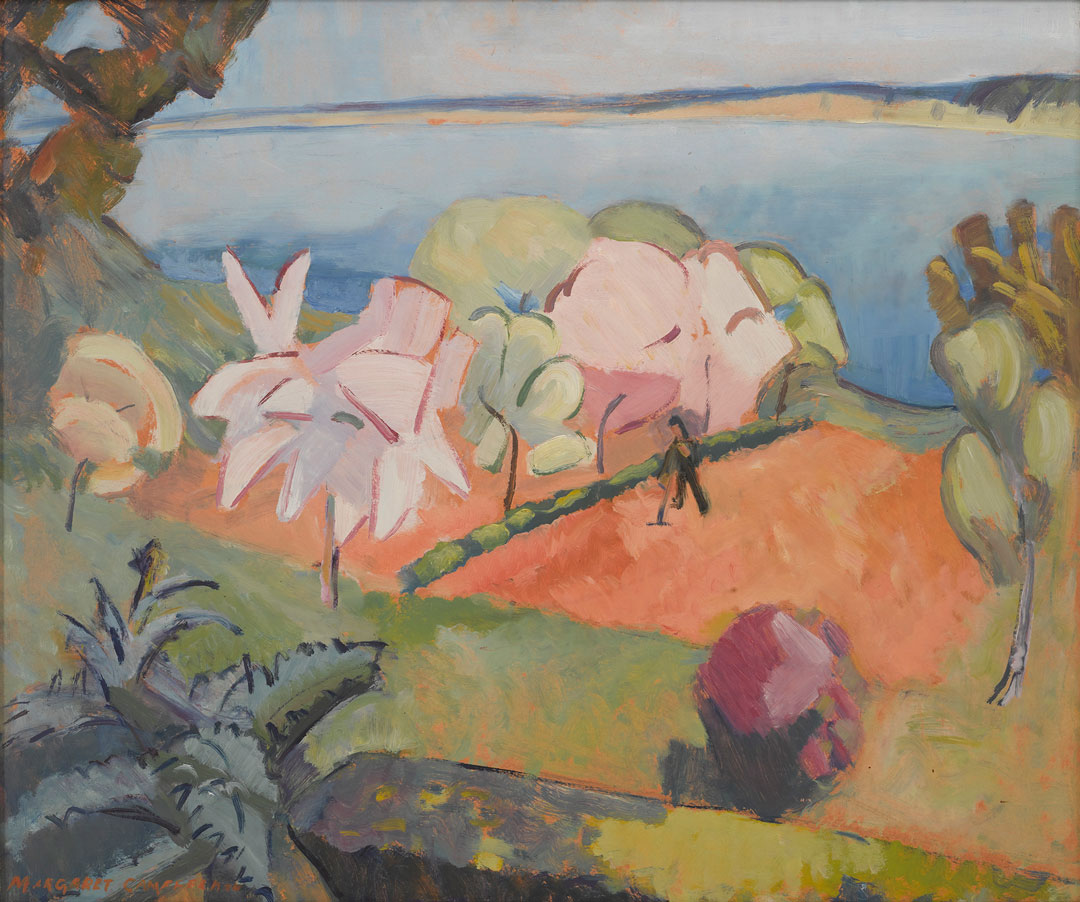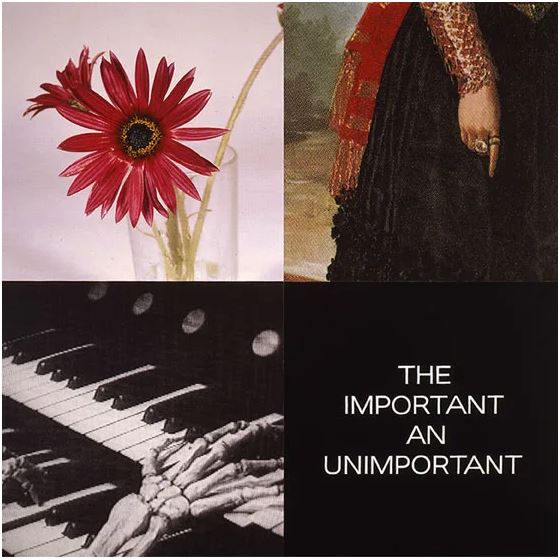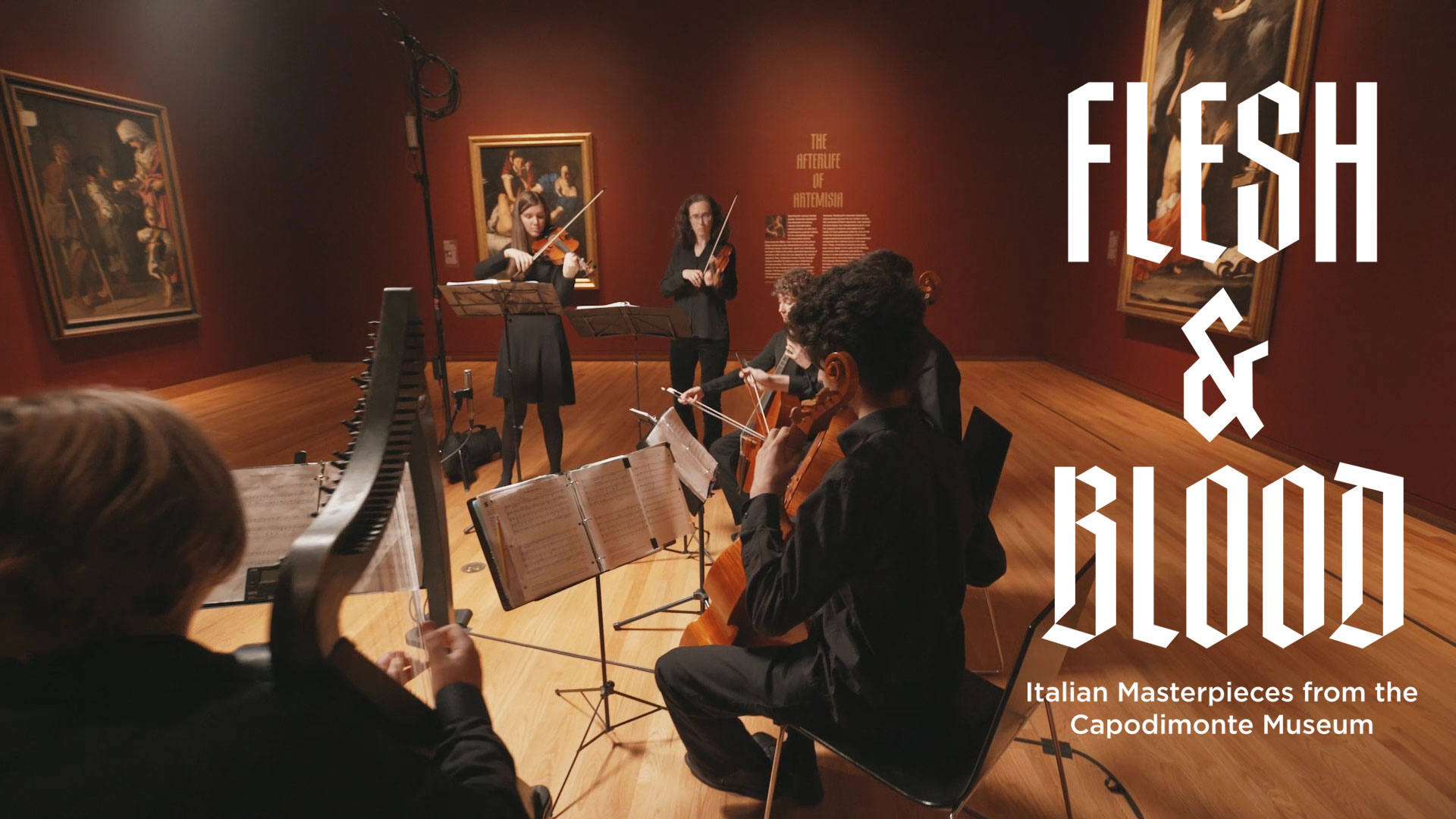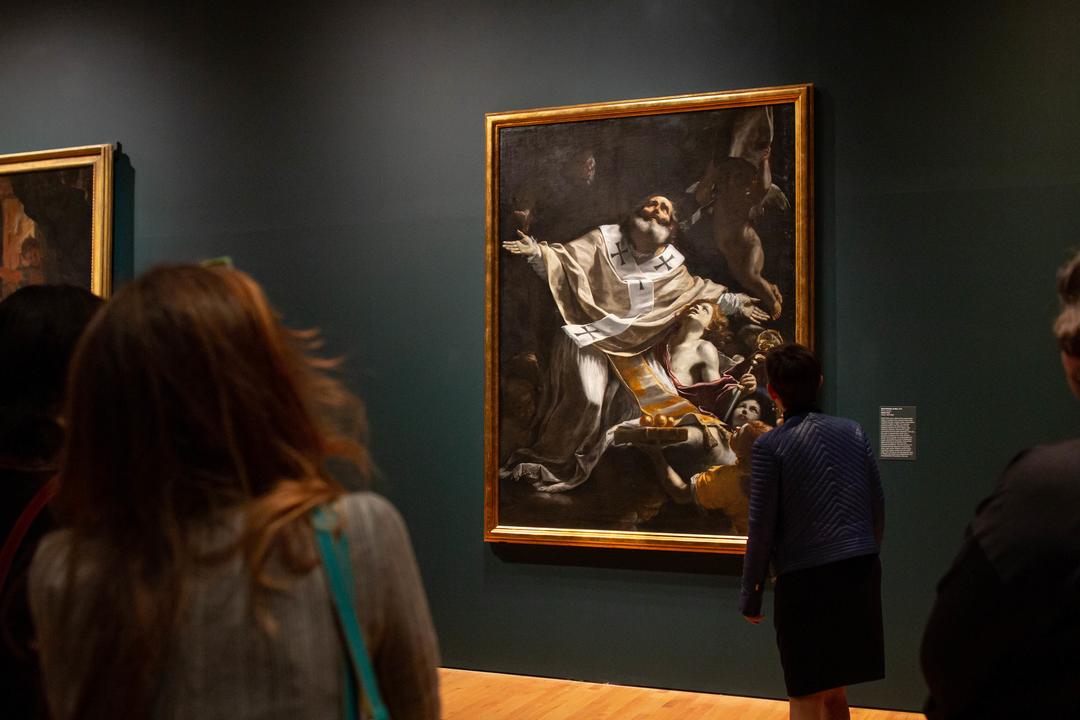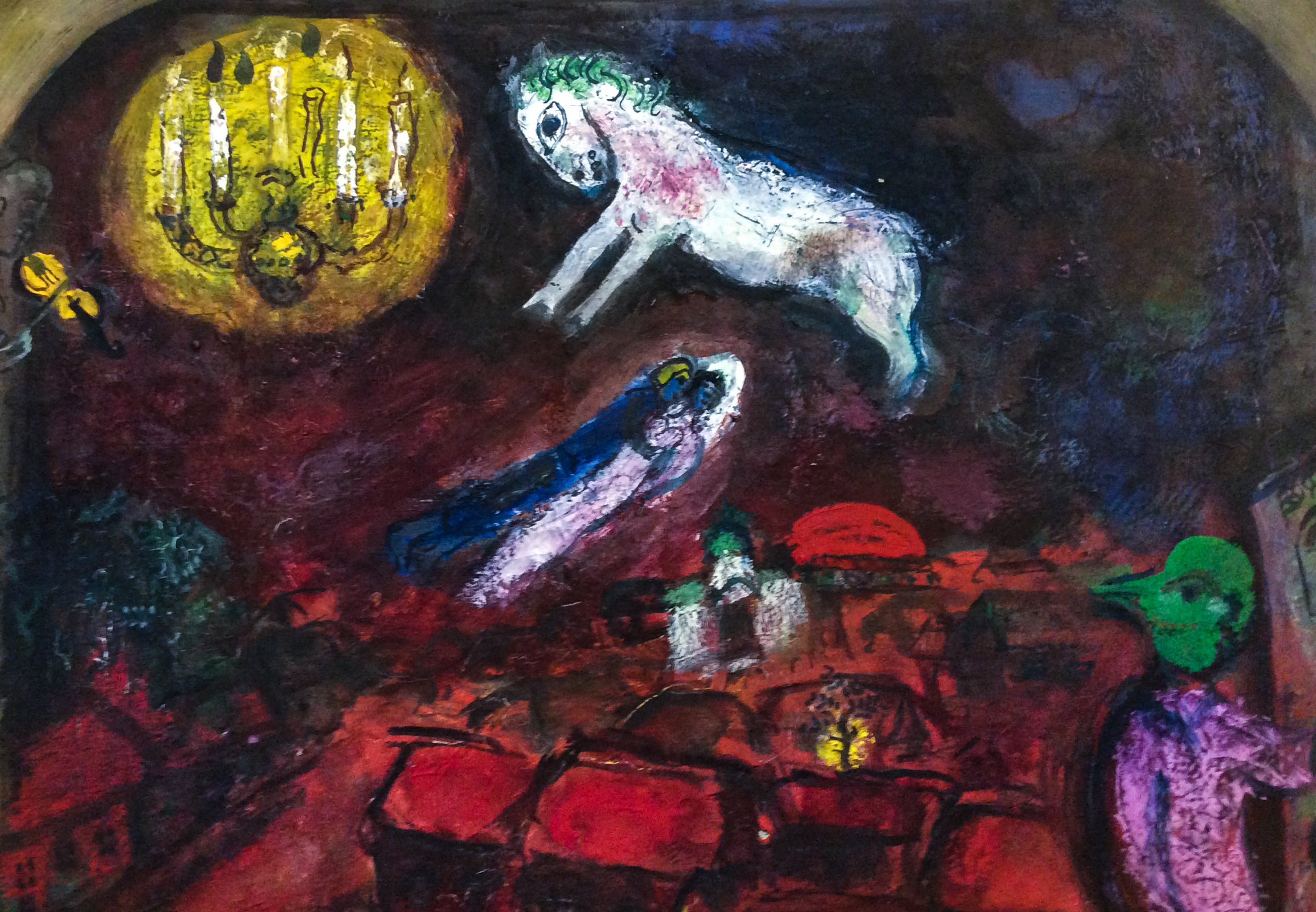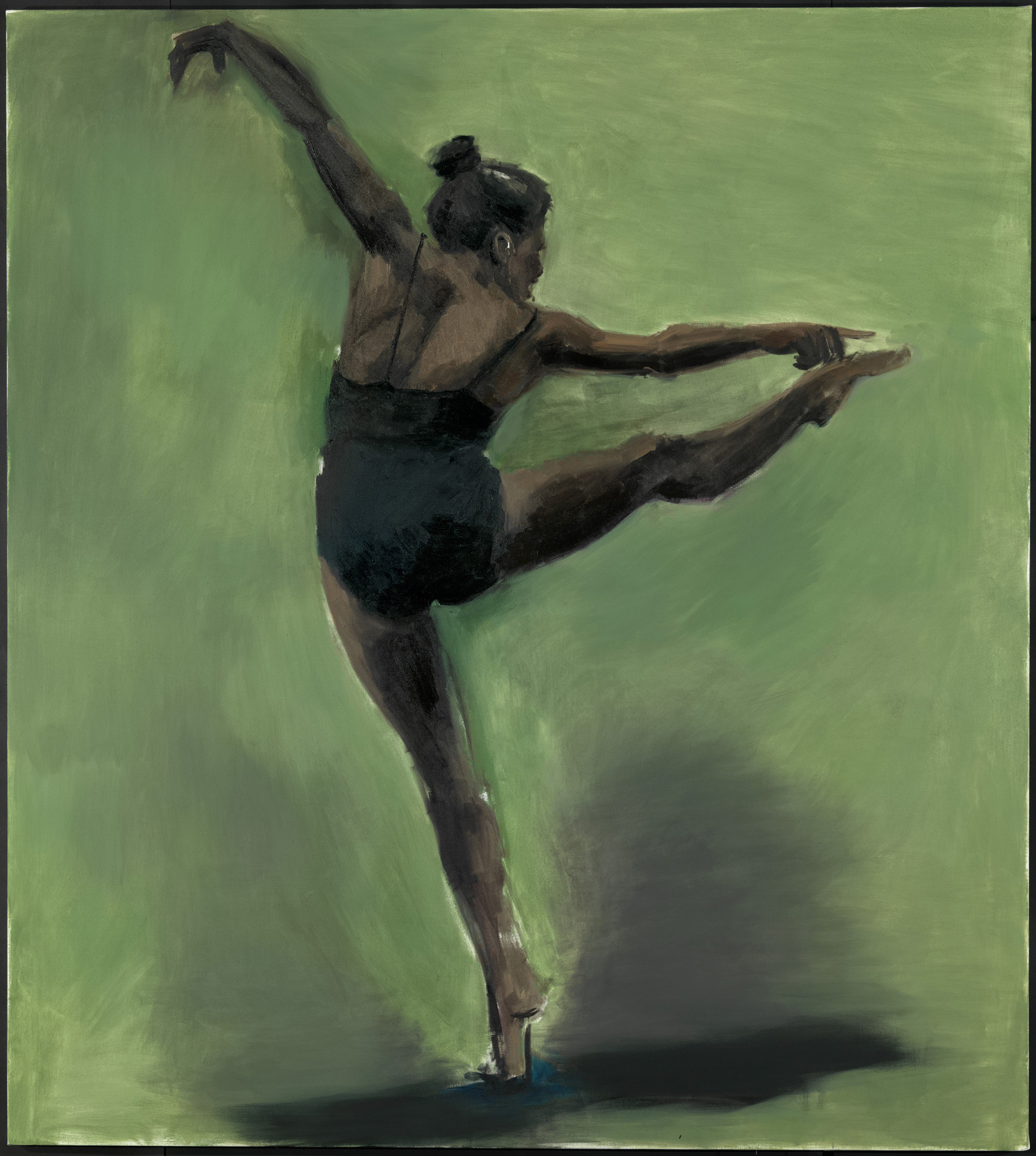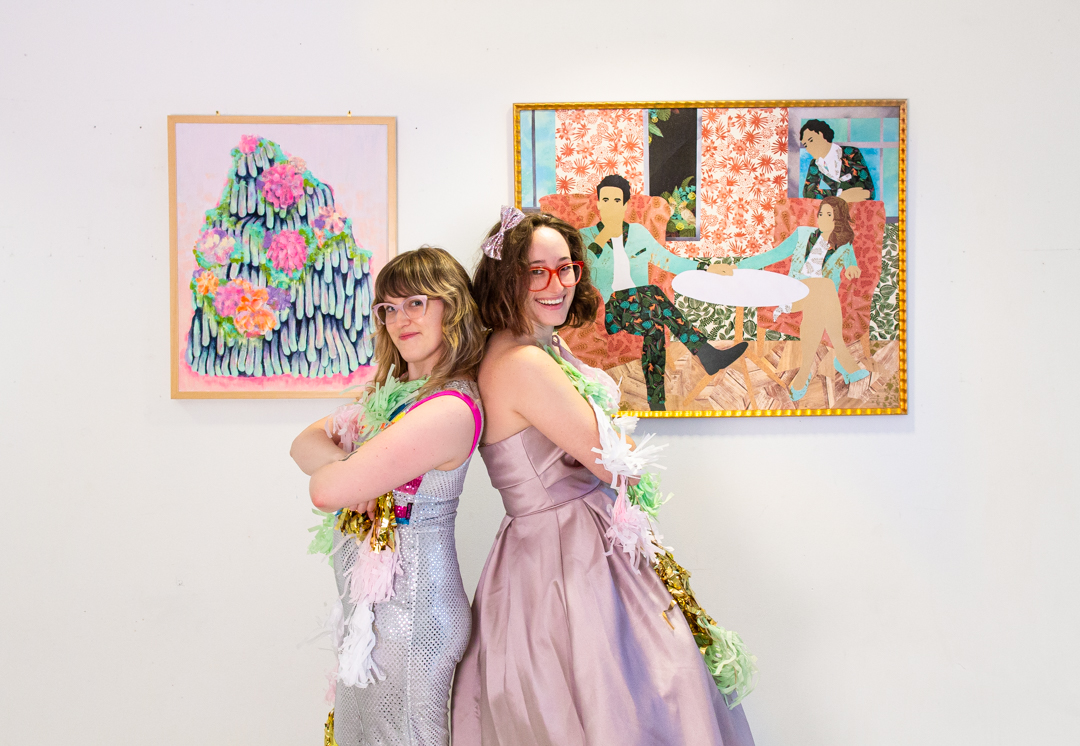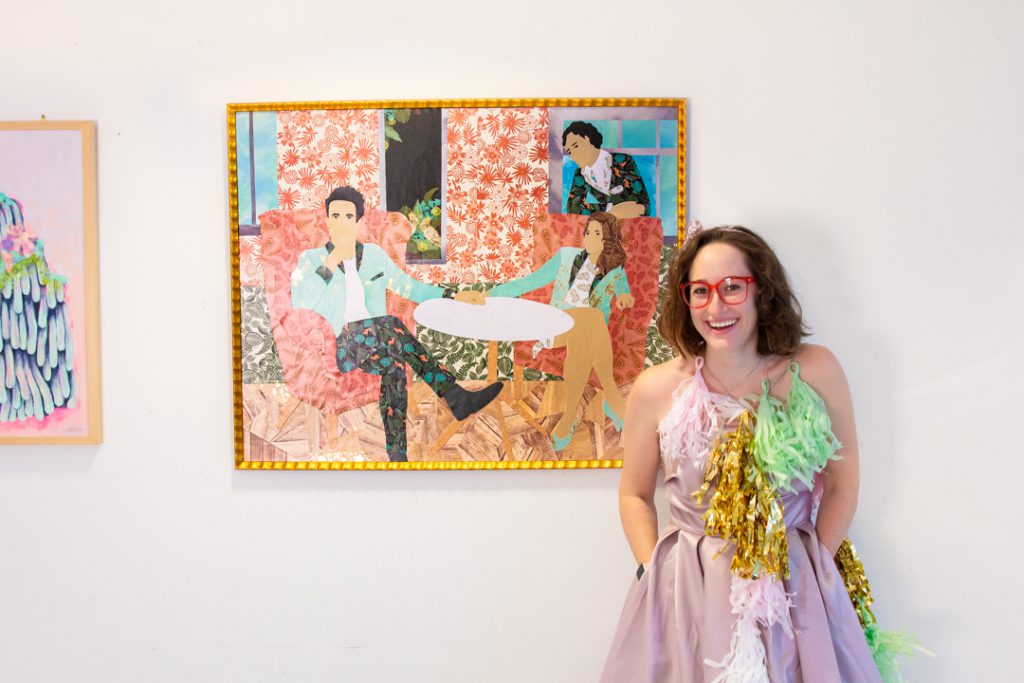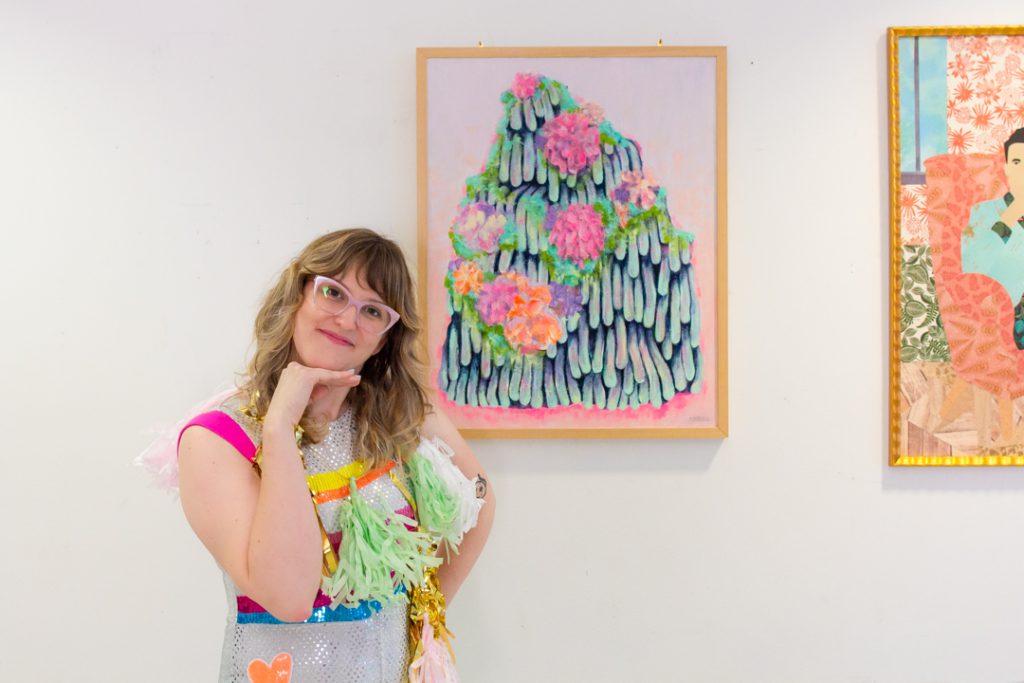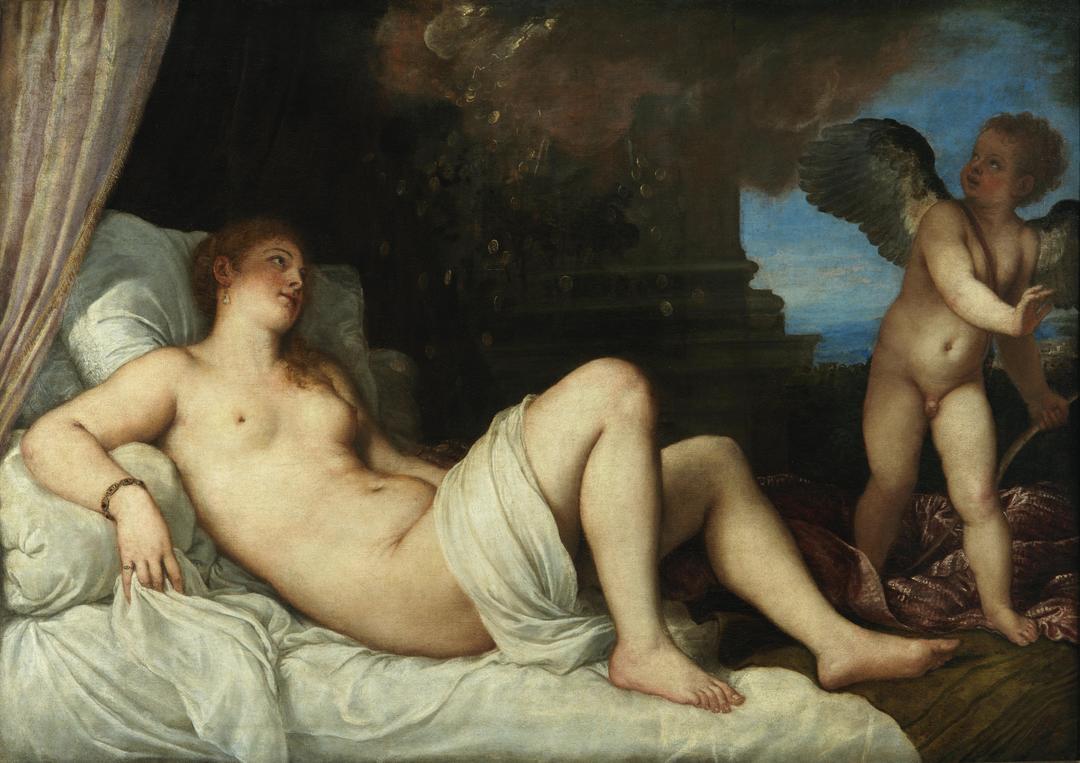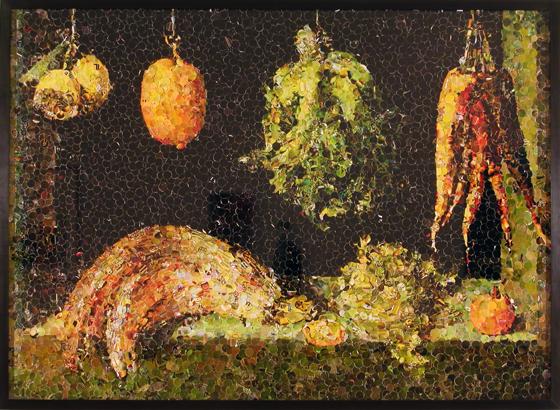Memory Map Smartphone Tour: The Vanishing American
In Jaune Quick-to-See Smith’s striking abstract painting The Vanishing American (1994), a series of Native figures dressed in traditional clothing are surrounded by marks and newspaper clippings with headlines including ‘Support the Tribal Dollar,’ ‘Best if Used by 2000,’ and ‘Built-in Upgradability.’ Clustered together, the figures stand in defensive positions.
This work represents the making of a comeback. Not only the comeback of a person or community of people, but also the return of a mentality that has been erased by contemporary society’s monoculture. Learn more about the significance behind The Vanishing American directly from the artist by tuning in to the free smartphone tour of Jaune Quick-to-See Smith: Memory Map at SAM. Originally produced by the Whitney Museum of Art, all nineteen stops of the audio tour are accessible by scanning the QR codes throughout the exhibition’s galleries or on your own time via our SoundCloud.
The Vanishing American, 1994
NARRATOR: Smith called this painting The Vanishing American. It mixes brushy abstraction with headlines clipped from newspapers. In the upper right, one reads “What Americans,” pointing loosely to the painting’s ironic explorations of identity.
JAUNE QUICK-TO-SEE SMITH: See there’s always this thing about “the vanishing Native American.” The vanishing American Indian. And we’ve been hit with that all of our lives. That, “oh you guys are so watered down.” “Oh you guys are so mixed blood, you don’t know who you are.” “Oh you’re so bastardized, you have no culture left.”
NARRATOR: Smith said she was inspired to make the painting after a community meal during medicine lodge ceremonies on the lands of the Blackfeet Nation, near her childhood home.
JAUNE QUICK-TO-SEE SMITH: And then when everybody would gather to eat, people would start talking about, “And, you know, the white people are just going to do themselves in with all their poisons and all the pesticides and everything that they’re using on our food. And so they’re just going to be the vanishing white men.” And then everybody would laugh.
So, I came back into the studio, and here I found this sign called built-in upgradability out of some New York Times or some ad or something. And I said, yeah, that really fits what the elders are saying, that we’re going to make it through this. Built-in upgradability, that’s what we have. We’ve been here for thousands and thousands of years. They just got here yesterday. They keep pretending like, oh, we just got here before them. Well, that’s not true. We’ve been here since the creation time. So the making of a comeback.
– Lily Hansen, SAM Marketing Content Creator
Photo: Alborz Kamalizad.
